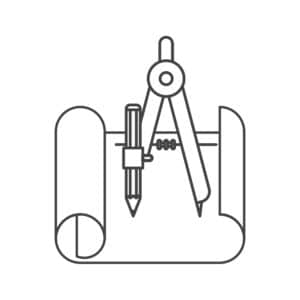In preparing a land development plan, many municipality zoning ordinance requirements that have to be considered as part of the design. There could be times when a certain regulation cannot be met that would require approval from the municipality for this particular regulation to not be required for the full land development plan to be approved.
A zoning variance refers to the approval from a municipality for a particular zoning regulation to not be required for a land development plan.
How a Variance Is Different From a Waiver
Even though a variance is similar to a waiver, they are very different. Both refer to approvals from a municipality for a regulation to not be required for a land development plan approval.
However, a variance refers to requests involving regulations found in the municipality zoning ordinance. A waiver refers to requests involving regulations found in the municipality subdivision and land development ordinance.
A variance involves a process that can include completing an application, paying extra fees, and attending a zoning hearing board meeting where you or your civil engineer would have to present your project and the reasons for why you think your site should be allowed a variance.
A waiver is something that can usually be requested through a letter to the municipality and is then approved after a review and a recommendation of a reviewing engineer.
Related: What Is a Waiver in Land Development?
The Zoning Variance Request Plan
Because a zoning variance would require an application and a meeting with a zoning hearing board, a special plan designated for your zoning variance request might have to be prepared by the civil engineer who is designing the land development plan.
This plan would show your proposed layout with building setback lines and any special labels or notes which would help explain why a variance is being requested.
The plan would also most likely have a note showing the section of the zoning ordinance for which you are requesting the variance.
Request Zoning Variances Early
Because of the extra time and expense involved with requesting a zoning variance, it would be a good idea to figure out the zoning variances for which you want to apply and then apply for them early in the design phase of your land development project. If your request is not approved, then you can avoid wasting too much time with a proposed layout that would have to be changed later.
Related: What Is a Zoning Ordinance?



